Terroir: one of the most interesting wine concepts
Labels: terroir, viticulture
mainly wine...
Labels: terroir, viticulture
Labels: viticulture
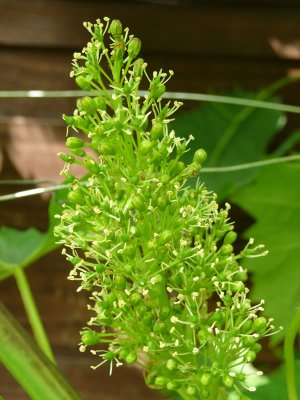
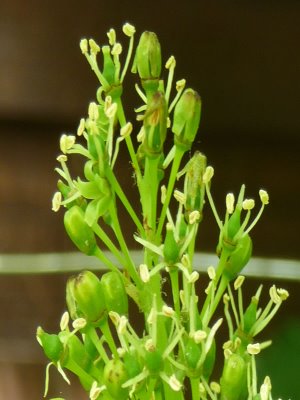
Labels: viticulture
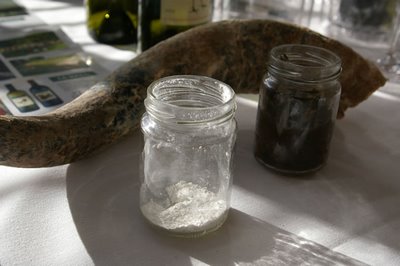 A leading expert on biodynamics kindly agreed to answer some queries I had about this unusual but increasingly important way of growing wine grapes. Here are the 12 questions I sent him. Have you got any you'd like to add to the list?
A leading expert on biodynamics kindly agreed to answer some queries I had about this unusual but increasingly important way of growing wine grapes. Here are the 12 questions I sent him. Have you got any you'd like to add to the list?
Labels: biodynamics, viticulture
 It turns out that the last segment of my short trip, added as a bit of an afterthought, turned out to be one of the most interesting and inspiring. What a country New Zealand is!
It turns out that the last segment of my short trip, added as a bit of an afterthought, turned out to be one of the most interesting and inspiring. What a country New Zealand is!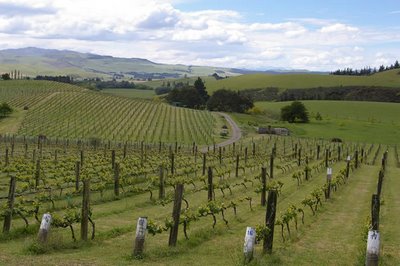
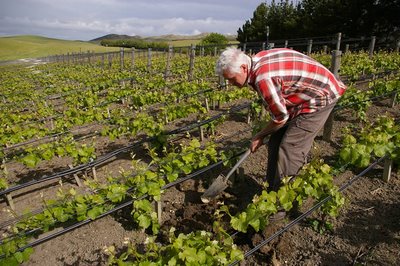
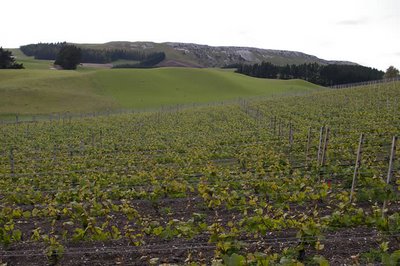
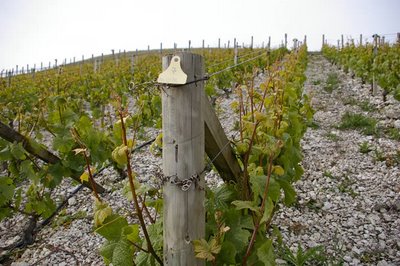 [I'm writing this from Changi Airport, where I have 5.5 hours to recover before the next leg. Free broadband internet access this time: I'm up on floor 3 near the business class lounges, which I think is the explanation. The contrast of the relaxed ease and warmth of Changi with the clamour and busyness of Heathrow is stark.]
[I'm writing this from Changi Airport, where I have 5.5 hours to recover before the next leg. Free broadband internet access this time: I'm up on floor 3 near the business class lounges, which I think is the explanation. The contrast of the relaxed ease and warmth of Changi with the clamour and busyness of Heathrow is stark.] Labels: biodynamics, New Zealand, viticulture
 It has been an odd sort of day. Left home this morning in driving rain; returned this evening under blue skies.
It has been an odd sort of day. Left home this morning in driving rain; returned this evening under blue skies.Labels: Australia, clare valley, Tasmania, viticulture
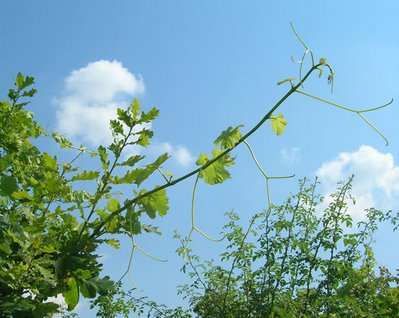
Labels: ramblings, viticulture
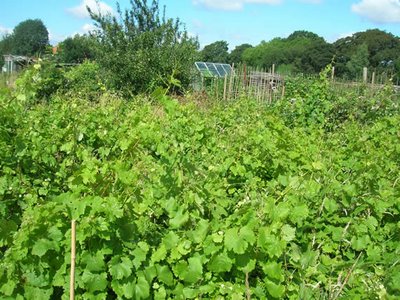 Visited my allotment vineyard for the first time in a while. It's pretty difficult trying to work organically when (a) you haven't got much time and (b) when it has rained for most of June. My sole defence against oidium (a fungal disease that affects Vitis vinifera vines) is sulfur, and when you apply this in the rain it gets washed off. I applied some more today, but there are already signs of oidium on some of the grapes. Not good. The vines are also amazingly vigorous, and you can hardly tell where one starts and one ends. Next year I'll try to implement a vertical trellis and grow the vines in neat hedges. I'll likely have plenty of time to spend on the allotment then.
Visited my allotment vineyard for the first time in a while. It's pretty difficult trying to work organically when (a) you haven't got much time and (b) when it has rained for most of June. My sole defence against oidium (a fungal disease that affects Vitis vinifera vines) is sulfur, and when you apply this in the rain it gets washed off. I applied some more today, but there are already signs of oidium on some of the grapes. Not good. The vines are also amazingly vigorous, and you can hardly tell where one starts and one ends. Next year I'll try to implement a vertical trellis and grow the vines in neat hedges. I'll likely have plenty of time to spend on the allotment then. Labels: ramblings, viticulture
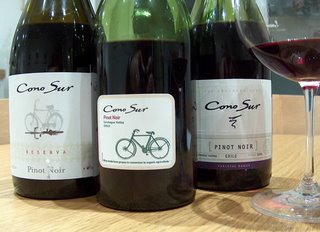
Labels: Chile, pinot noir, viticulture
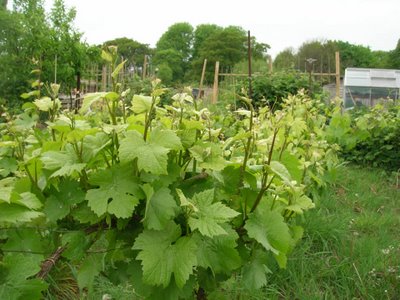 While the boys were at cricket practice I took a chance to check on the vines on my allotment. They're motoring ahead. Looks like there's going to be a heavy crop set. As you can see, I haven't done any weed control yet. Perhaps I could call it biodynamic. If I had access to a horse, or a spare couple of mornings, I could till it manually.
While the boys were at cricket practice I took a chance to check on the vines on my allotment. They're motoring ahead. Looks like there's going to be a heavy crop set. As you can see, I haven't done any weed control yet. Perhaps I could call it biodynamic. If I had access to a horse, or a spare couple of mornings, I could till it manually.Labels: viticulture
Saturday and Sunday have been two glorious days. Comfortable temperatures in the early 20s and blue skies. Plants bursting with new life and blossom everywhere. I visited my allotment to see how the vines, which I'd pruned shortly before leaving on my trip, were progressing.
Labels: viticulture
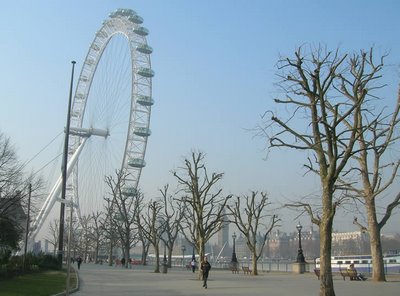 With the exception of a cold blip a couple of weeks ago, it has been a warm, bright spring so far, after the wettest winter I can remember. And it was another beautiful spring day today. There's something special about the gently warming spring sun, and the freshness in the air that frequently accompanies it at this time of year.
With the exception of a cold blip a couple of weeks ago, it has been a warm, bright spring so far, after the wettest winter I can remember. And it was another beautiful spring day today. There's something special about the gently warming spring sun, and the freshness in the air that frequently accompanies it at this time of year.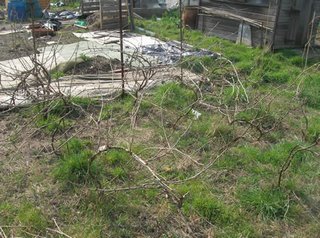 The 60 vines on my allotment were in need of a haircut - this season's pruning is long overdue. I've sort of deliberately left it late, because late pruning can help avoid frost damage by retarding budburst of the bits you want to keep. And the vines are about 20 days advanced this year, so the risk of frost damage is very high. But I also found it hard to schedule in, even though spending time messing with vines is a source of great fun to me.
The 60 vines on my allotment were in need of a haircut - this season's pruning is long overdue. I've sort of deliberately left it late, because late pruning can help avoid frost damage by retarding budburst of the bits you want to keep. And the vines are about 20 days advanced this year, so the risk of frost damage is very high. But I also found it hard to schedule in, even though spending time messing with vines is a source of great fun to me.Labels: ramblings, viticulture
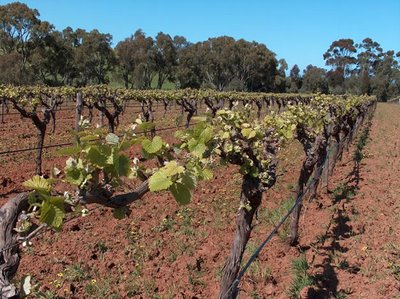
Labels: viticulture
Some thoughts on greenness in South African reds, prompted by comments on an earlier post. First, let me state that I'm a big fan of South African wines. I've been there twice in the last couple of years, most recently in December 2005, and I was excited by a lot of what I tasted. But at the same time, I have to say that a proportion of the red wines suffer from a green streak, which I assume is caused by a proportion of unripe grapes.
Labels: south africa, viticulture